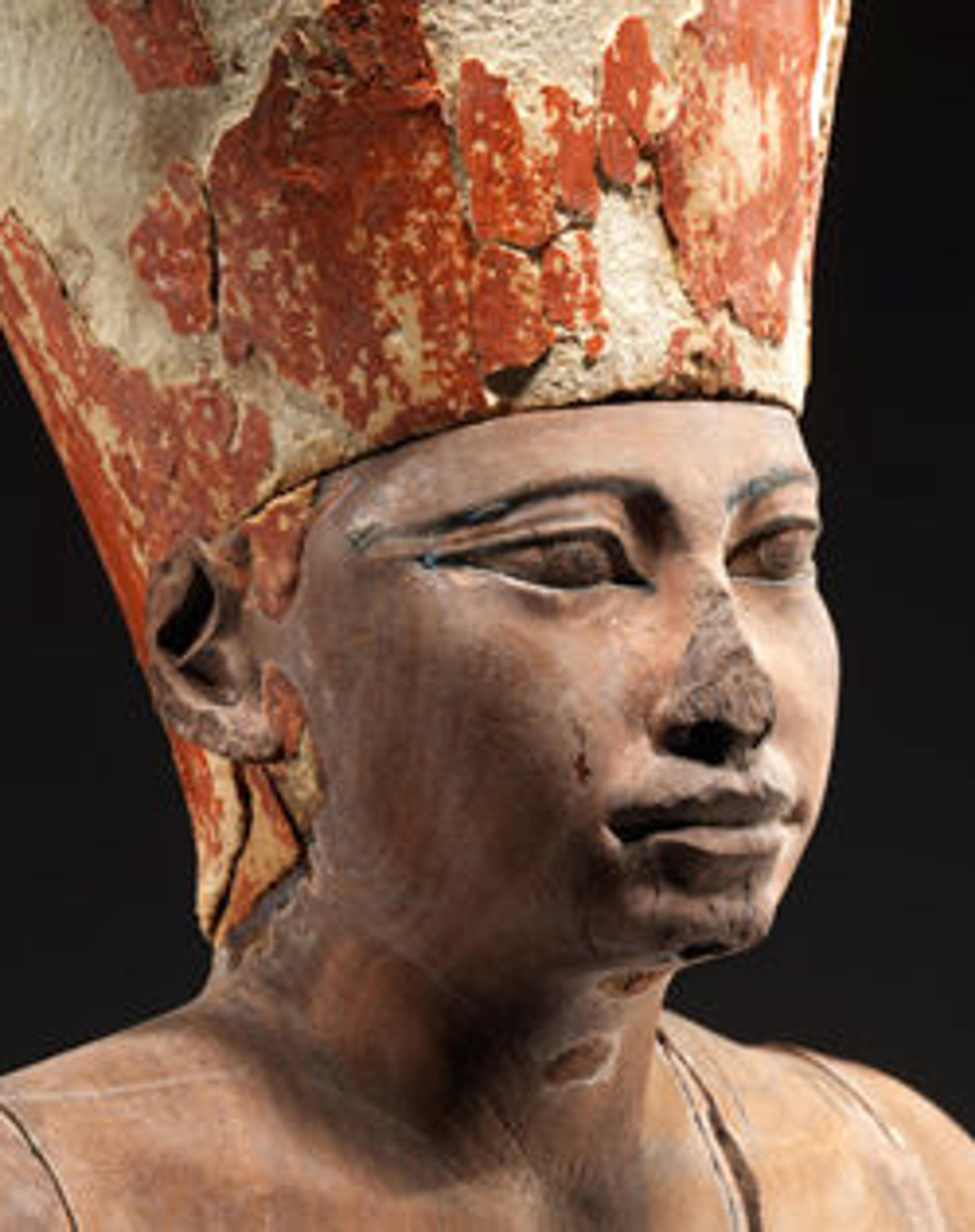Shabti of Senebimi
Funerary figures known as shabtis first appeared during the early Middle Kingdom. When the deceased was called upon to carry out obligatory labor in the next world, these magical images were supposed to act in his or her place. Their traditional form is that of a wrapped mummy, initially represented as seen here, without defined arms or hands. The gessoed body of this early specimen is inscribed with a simple offering formula and the owner’s name.
Artwork Details
- Title:Shabti of Senebimi
- Period:Middle Kingdom
- Dynasty:Dynasty 12
- Date:ca. 1981–1802 B.C.
- Geography:From Egypt, Middle Egypt, Meir, Khashaba excavations, 1910
- Medium:Wood, paint
- Dimensions:H. 36.2 cm (14 1/4 in.); W. 6 cm (2 3/8 in.); D. 6 cm (2 3/8 in.)
- Credit Line:Rogers Fund, 1911
- Object Number:11.150.14
- Curatorial Department: Egyptian Art
More Artwork
Research Resources
The Met provides unparalleled resources for research and welcomes an international community of students and scholars. The Met's Open Access API is where creators and researchers can connect to the The Met collection. Open Access data and public domain images are available for unrestricted commercial and noncommercial use without permission or fee.
To request images under copyright and other restrictions, please use this Image Request form.
Feedback
We continue to research and examine historical and cultural context for objects in The Met collection. If you have comments or questions about this object record, please contact us using the form below. The Museum looks forward to receiving your comments.
